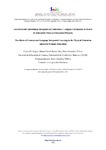Los efectos del Aprendizaje Integrado de Contenidos y Lenguas Extranjeras en el área de Educación Física en Educación Primaria

Use este enlace para citar
http://hdl.handle.net/2183/23928
A non ser que se indique outra cousa, a licenza do ítem descríbese como Atribución-NoComercial-SinDerivadas 4.0 España
Coleccións
Metadatos
Mostrar o rexistro completo do ítemTítulo
Los efectos del Aprendizaje Integrado de Contenidos y Lenguas Extranjeras en el área de Educación Física en Educación PrimariaTítulo(s) alternativo(s)
The effects of Content and Language Integrated Learning in the Physical Education subject in Primary EducationData
2019Cita bibliográfica
Gil-López, V., Sierra-Díaz, M., & González-Víllora, S. (2019). Los efectos del Aprendizaje Integrado de Contenidos y Lenguas Extranjeras en el área de Educación Física en Educación Primaria. Sportis. Scientific Journal of School Sport, Physical Education and Psychomotricity, 5(3), 562-585. https://doi.org/10.17979/sportis.2019.5.3.5527
Resumo
[Resumen] El estudio de lenguas extranjeras es una competencia primordial y popular en la
actualidad. El Aprendizaje Integrado de Contenidos y Lenguas Extranjeras (AICLE) está
siendo investigado y desarrollado cada vez con más frecuencia en España. El objetivo de esta
investigación fue observar y comparar los efectos en el aprendizaje de contenidos, en la
motivación y en las horas de estudio dedicadas en el aprendizaje de una lengua extrajera (en
este caso inglés) usando la metodología AICLE en la asignatura de EF en comparación con la
metodología de aula tradicional. Los resultados de este estudio con una muestra de 51
alumnos y alumnas de entre 8 y 9 años (8,76 ± 0,30 años), 25 de los cuales en el grupo
experimental y 26 en el control, avalan y refuerzan lo ya estudiado hasta la fecha, analizando
tres campos de estudio: aprendizaje de los contenidos teóricos, niveles de motivación y
tiempo de estudio en el hogar. En conclusión, esta investigación desvela que la metodología
AICLE en el área de Educación Física mejora la adquisición de los conocimientos en inglés
por parte del alumnado, incrementa significativamente la motivación al tratarse de una
metodología más participativa y disminuye significativamente el tiempo de estudio en el
hogar. [Abstract] Nowadays, learning foreign languages has become widely popular and necessary for
global advancement. Content and Language Integrated Learning (CLIL) is being thoroughly
investigated and developed more frequently in Spain. The objective of this research was to
observe and compare the effects of content learning, motivation and study time dedicated to
learning a foreign language (English in this case) using the CLIL methodology in physical
education in comparison with the traditional classroom methodology. The conclusive data
that tested 51 students from 8 to 9 years old (8,76 ± 0,30 años), 25 in the experimental group
and 26 in the control group, support and reinforce what has been researched to date by
analysing three fields of study: learning the theoretical content, motivation levels and study
time at home. In conclusion, this research reveals that the CLIL method in Physical Education
improves the students’ acquisition in English, significantly increases their motivation via
participatory methods and significantly reduces study time at home.
Palabras chave
AICLE
Educación física
Educación primaria
Lengua inglesa
Respuesta física total
CLIL
Physical education
Primary education
English language
Total physical response
Educación física
Educación primaria
Lengua inglesa
Respuesta física total
CLIL
Physical education
Primary education
English language
Total physical response
Versión do editor
Dereitos
Atribución-NoComercial-SinDerivadas 4.0 España
ISSN
2386-8333






